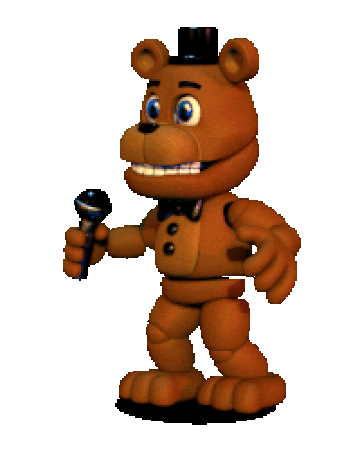The Puppet is one of five animatronics not to be seen in a party room, the others being Toy Freddy, Foxy, BB, and Golden Freddy. In the PC version, The Puppet has its head sticking out of the box before the entire body is shown. Yet, in the mobile version, The Puppet's body is shown first. The Puppet is possibly the tallest animatronic in the.
| |||||
|
|
A type of puppet that demands different techniques of animation based on the body of the puppeteer.
Fnaf World Puppet Full Body Armor
:origin()/pre00/31f9/th/pre/f/2016/094/6/1/jj_by_fearlessgerm82_d9k2399_by_elender13-d9xpmai.png)
These puppets could be defined by default, in the sense that they are not costume puppets. Nor are they the large papier-mâché carnival heads seen in many Latin festivals (costumed figures known as gigantes y cabezudos, roughly, “Giants and Big-Heads”; in Catalan, gegants i capgrossos and in the Basque language, erraldoi eta buruhandiak, the bodies covered in clothing matching the costume’s theme). Nor are body puppets the skirted hobby horses, nor Bunraku puppets, nor humanettes …Yet they all show an important part of the puppeteer’s body.

Body puppets can be founded on a strange impression of visual “trickery”. Philippe Genty, with another puppeteer hidden under his cape, together establish an illusionary relationship between his tall, monocle-wearing gentleman and himself. To whom do the hands belong? Who manipulates what? In carnival processions, there can be seen ambiguous characters that look like people carrying an old person astride their backs or placed in baskets. The head and the arms of the carrier are in fact those of the puppet placed in front, whilst those of the aged person are actually the puppeteers. It is this inversion that gives a humorous image to the scene. In Caracas, Venezuela, in 1986, a street entertainment tasked with attracting onlookers to the door of a department store performed alone as an exotically dressed couple dancing a passionately unrestrained tango. The feet of the dancer were attached to those of a limp puppet in the image of a life-sized woman. The dancer’s hand is laced to her waist (thus directing the torso and the head that is mounted on a springy neck) and his right hand holds the left hand of his dance partner, who has “her” own right hand attached to the shoulder of the puppeteer-dancer. Animated body language combined with outrageous choreography, as well as ridiculous, over-the-top clothing, wigs and make-up combined for an unmistakeable comic effect. As such, clowns often employ this kind of manipulation.

Another example of a body puppet is that of the puppeteer on all fours who is hidden by two wrestling puppets, placed on his back. The legs of one are the puppeteer’s legs, and the other wrestler’s legs are the puppeteer’s arms. The manipulation consists of advance, retreating, moving and briskly changing direction.
Fnaf World Puppet Full Body Sketch
Geneviève Vedrenne of the Théâtre d’Animation du Manifole produced Chasse Interdite (1969) using “shield-puppets” (marionettes-boucliers) and “apron-puppets” (marionettes-tabliers) conceived by Marcel Violette and manipulated by dancers and mimes due to their demand of great body control. In the piece, a dancer played the role of an ostrich. Holding the body of a shield-shaped puppet covered in ostrich feathers, she slid her forearm inside a strap and grasped the hilt of a sword with her hand in the manner of a soldier. Her legs, visible underneath the shield from the thigh down, were perched on high heels. Her other arm, placed above the shield, was dressed in a long red glove, constituting the neck of the ostrich and ending with her hand as its head. This small beast (rather silly in the story) did slow dances by playing with its legs, glove, and feather like at the Folies-Bergère.
Among the other characters were also an antelope and her young. The mother antelope was made of a mask with a handle, held aloft in one hand by the dancer. A bit of beige tissue bordered by fur went from the mask to the dancer’s waist where it was fastened like an apron. His body, clothed in patterned tights, suggested the body of the antelope. The dancer held in his other hand a string puppet in the image of the young antelope. The finesse of the dancer’s body movement gave realism to the walk (despite the fact that there weren’t four legs), the maternal tenderness and caresses, the hopeless flight of the antelope and her young when faced with the hunter, and the two animals’ tragic death.
In Mori el Merma (1978) the Spanish troupe, Teatre de la Claca (see Joan Baixas) manipulated giant puppets painted by Joan Miró. One of these “dressed”, an actor, whose head drooped forward, revealing a bird-like mask. In front of him, a circle, consisting of rolls of tissue representing the body, was attached to his knees. Attached at various points of the circle, other rolls simulated the arms, ending in hands. This type of puppet is indeed a “body” puppet, for the actor’s body is present and contributes to the image of the character.